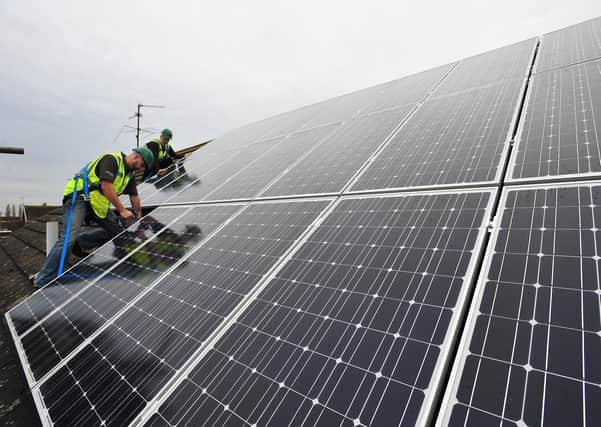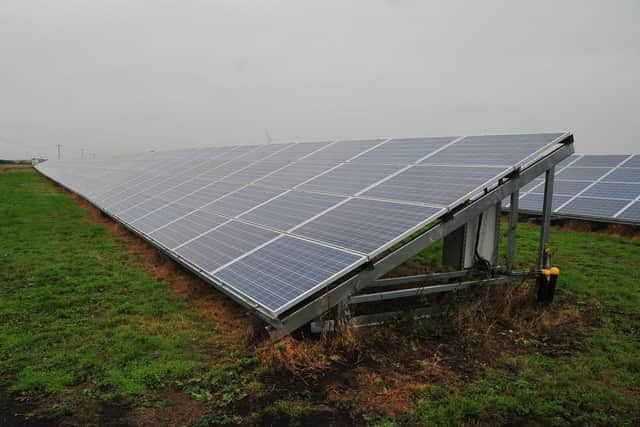Renewable energy sites generated more than 100 gigawatts per hour of electricity in Peterborough last year


PM Boris Johnson said the coronavirus crisis should be used as a catalyst to make the UK the world leader in offshore wind power generation, creating thousands of jobs in the process.
But with the plans focusing largely on offshore technology, climate charity Possible said more needs to be done to see the full benefits of the “hugely popular” onshore wind farms.
Advertisement
Hide AdAdvertisement
Hide AdFigures from the Department for Business, Energy and Industrial Strategy show 145,655 megawatts per hour (around 146 gigawatts) of renewable electricity were generated in Peterborough in 2019.


This was 119 per cent more energy than the 66 GWh produced six years ago in 2014, the earliest year of data available.
The biggest producer of energy in Peterborough last year was onshore wind farms, which generated 91,745 MWh – 63 per cent of the total.
This was followed by solar power (22 per cent), and landfill gas, which is created by the decomposition of organic materials in a landfill – which generated a further 22,257MWh (15 per cent).
Advertisement
Hide AdAdvertisement
Hide AdRenewable electricity generated around a third of the UK’s total energy last year (120,675 GWh) – almost double the amount it did in 2014.
Offshore wind farms, which are turbines located at sea, and onshore wind farms, based on land, were each responsible for 27 per cent of the UK’s total, but the Government’s plan focuses largely on those in the water.
Downing Street said the £160 million investment programme will enable the sector to support up to 60,000 jobs by 2030, upping the target for offshore wind from 30 to 40 gigawatts.
Speaking at the Conservative Party Conference, Mr Johnson said: “Your kettle, your washing machine, your cooker, your heating, your plug-in electric vehicle – the whole lot of them will get their juice cleanly and without guilt from the breezes that blow around these islands.
Advertisement
Hide AdAdvertisement
Hide Ad“As Saudi Arabia is to oil, the UK is to wind – a place of almost limitless resource, but in the case of wind without the carbon emissions and without the damage to the environment.”
Climate charity Possible said it is great to see the PM finally backing wind power, but much more needs to be done to see the full benefits of the “hugely popular” onshore wind.
The Government’s own polls show 77 per cent of the public support onshore wind energy – but solar, offshore turbines and wave/ tidal power were more popular.
Director Alice Bell said: “It remains a scandal that a local community group in England will still be unable to put up a wind turbine of their own to power their village, because onshore wind turbines are still banned under planning rules.
Advertisement
Hide AdAdvertisement
Hide Ad“Onshore wind is generating massive amounts of electricity for British households.
“Like all renewables, it’s popular. Moreover, it’s the cheapest way to generate electricity we have.”
In March, the Government reversed a 2015 decision which had ended support for onshore wind farms and prevented them from competing with other technologies to secure contracts in low carbon power schemes. It had put a halt on new wind farm plans being permitted due to their divisive nature with the public in rural communities. Questions had been raised about the efficiency of onshore wind turbines and planning processes had been protracted by local opposition groups against wind farms blighting their landscapes as well as raising issues of noise and effects on low flying aircraft radar.